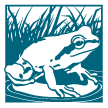Water Quality Monitoring: Cleanup Guidelines
General
- Glassware must be thoroughly washed, rinsed, and dried after every use.
- The items that need to be washed are those that held or in any way came into contact with the water samples as they were being tested. This includes eye droppers, but excludes those eye droppers that are contained within the containers of the chemicals they measure.
- The glassware should be rinsed with tap water first to remove reagent residue. It should then be scrubbed with a brush and tap water once and with brush and distilled water a second time. It is then rinsed twice with distilled water. The glassware should be left out in a clean place to air dry.
- The dirty water bottle should also be rinsed once or twice with tap water to remove sediments. The dirty water (except that in the special cadmium waste jar) can be put down the toilet.
Specific
- Two droppers and a direct reading titrator should never be washed with soap and cannot be cleaned on the inside with the test tube brush. Use only distilled water to rinse this equipment, which is noted again below.
- Rinse the glassware first with tap water to remove reagent residue.
- Use the test tube brush (Code 0513) from the turbidity in water test kit (Code 7519) to scrub the glassware with tap water.
- Use the brush and distilled water to clean the glassware again.
- Rinse twice with distilled water.
- The following equipment should be included in clean-up:
- Dissolved oxygen test kit (Code 5856)
- Test tube (Code 0299) and cap
- 2 water sampling bottles (Code 0688-DO) and caps
- Graduated cylinder (Code 2-2297)
- Do not use soap on the direct reading titrator (Code 0377-ST), but rather fill it several times with distilled water and discharge to rinse. Soap will ruin the plunger! When finished, pull up on the plunger so that the tip does not rest on the bottom of the titrator, where it is likely to stick. Leave at least 2 cm clearance.
- pH Tester 2 (Code 1066)
- Both probe area and cap
- Small plastic cup that held buffer solution
- Turbidity in water test kit (Code 7519)
- 2 turbidity columns (Code 0835)
- 2 plastic stirring rods (Code 1114)
- Thermometers (Code 1066)
- Both thermometer with and without string
- Nitrate test kit (Cat. No. 14161-00)
- 2 color viewing tubes (Cat. No. 1730-00) and caps
- Do not use soap on the dropper (Cat. No. 14197-00), but rather fill it several times with distilled water and discharge to rinse.
- Total phosphate test kit (Cat. No. 2250-01)
- 2 color viewing tubes (Cat. No. 1730-00)
- Mixing bottle (Cat. No. 2327-06) and cap
- Erlenmeyer flask (Cat. No. 505-41)
- Graduated cylinder
- Do not use soap on the dropper (Cat. No. 14197-00), but rather fill it several times with distilled water and discharge to rinse.
- TDS Tester 3 (Code 5-1758)
- Both probe area and cap
- Small plastic cup that held standard solution
- Ammonia-Nitrogen test kit (Code 3304)
- 2 plastic test tubes (Code 0124) and caps
More on Water Quality Monitoring
|
